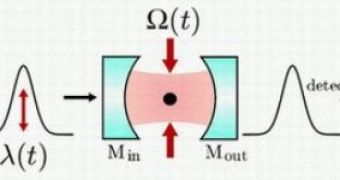A new experiment demonstrated a quantum state exchange between light and matter than can be reverted to the original state. This could help quantum computers overcome one of their biggest problems yet, decoherence.
Decoherence is a disruption in the internal systems of a quantum computer that instantly damages the inside information, because of external factors that these computers are vulnerable to. This is a major problem because the quantum computers heavily rely on the undisturbed evolution of quantum coherences.
Physicist David Boozer and his colleagues at the California Institute of Technology (CalTech) have just presented a major breakthrough in enabling the coherent distribution of quantum information across a network.
"The most significant result of this work is the demonstration of reversibility (coherence) for the light emission and absorption processes," said Boozer. "The fact that this process is coherent means that it preserves superpositions of quantum states, hence it is a way of mapping quantum information between an atom and light."
The building block of quantum computers is the qubit, a unit of quantum information that can be made up of either atoms or photons. Atoms have a long coherence time, so they're used as "stationary" qubits, the nodes of the network, while photons are the "flying" cubits, the quantum channels connecting the nodes.
This is, in fact, the first ever successful demonstration of a reversible single-photon source.
"In principle, in a quantum computer there are several logic gates, each of which performs an elementary quantum operation on one or two stationary qubits," Boozer explained. "The gates are connected together in a network, so that the output of one gate can be transported as a flying qubit to the input of the next gate. Hence, one needs a way to turn stationary qubits into flying qubits and vice-versa, which is what our recent work has demonstrated."
This is a huge step towards quantum computing applications using the reversible transfer of a qubit's state from "flying" to "stationary" and back again, without disruption with the outside world.

 14 DAY TRIAL //
14 DAY TRIAL //